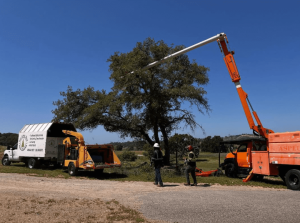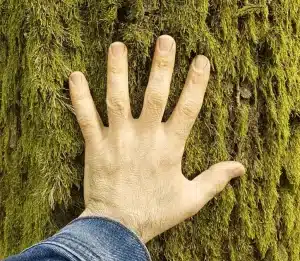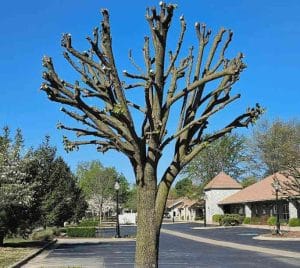The best trees for tree shaping are willow, sycamore, beech, maple, alder, and birch, species known for their flexibility, quick healing, and ability to adapt to artistic and functional shaping. Tree shaping, also called arborsculpture or living tree art, involves carefully guiding a tree’s natural growth into unique forms like arches, chairs, fences, or even outdoor tunnels. It’s a slow but rewarding process that merges creativity and patience with the natural world, resulting in living sculptures that continue to grow, breathe, and beautify your landscape year after year.
Before starting, it’s important to choose a tree that can handle the bending, pruning, and grafting involved. Some trees naturally respond well to shaping, while others resist or break easily. The right tree ensures smoother shaping, healthier growth, and long-lasting results that look incredible for decades.
Table of Contents
What Makes a Tree Good for Shaping
Not every tree can be shaped successfully. The best trees for shaping share a few important qualities: flexibility, healing speed, moderate growth, and strong root systems. A young tree that bends easily and heals fast is far more likely to hold its shape without damage. Trees that grow at a manageable pace allow for steady shaping rather than uncontrolled, wild growth. Graft-friendly species are also preferred since many shaping techniques require fusing branches together to create new structures. And finally, trees with long lifespans make your living artwork last for generations.
1. Willow (Salix spp.)
Willow trees are the most popular choice for tree shaping thanks to their incredible flexibility, fast growth, and natural ability to adapt to creative forms. Their young shoots can bend and twist without breaking, making them ideal for beginners who want visible progress within a single growing season. Willow branches root easily when they touch moist soil, allowing designs to grow stronger over time as new roots support the structure. Because they heal quickly, willows “lock in” shapes faster than most other species. These trees thrive in moist environments such as near ponds or streams, where their roots can access consistent water. However, it’s important to plant them away from buildings or underground pipes, since their extensive root systems may spread in search of moisture. Whether you’re creating a living arch, a woven fence, or a dome-like garden sculpture, willow trees remain one of the most forgiving and rewarding species for shaping projects.
2. Sycamore (Platanus occidentalis)
Sycamore trees are another excellent choice for shaping, especially for larger or more architectural designs. Their combination of strength and flexibility allows them to handle extensive pruning and bending without losing structure. Sycamores have a naturally elegant appearance, with large leaves that create dense shade and bark that peels into cream, gray, and tan patches for a decorative, textured look. They adapt well to a variety of soil types and climates, making them dependable across many regions. Sycamores are perfect for shaping into living tunnels, shaded walkways, or large garden structures that require sturdy frameworks. When shaping a sycamore, it’s best to prune during its dormant season to reduce stress and encourage smoother healing. Over time, your shaped sycamore will develop into a strong, beautiful structure that blends functionality with natural art.
3. Beech (Fagus sylvatica)
Beech trees are prized for their smooth gray bark and elegant form, making them perfect for long-term shaping projects that aim for refinement and sophistication. Although slower growing than willow or sycamore, beech trees are incredibly durable and maintain their form beautifully once shaped. When young, their branches are flexible enough to bend into intricate patterns, and as they mature, they harden into lasting structures that can endure for decades. Beech trees resist most diseases and pests, meaning your living sculpture will remain healthy with minimal maintenance. Because of their strength and beauty, they’re ideal for living chairs, intertwined trunks, or focal-point sculptures in gardens and parks. Patience is required, as beech trees shape slowly, but the results – smooth, sculptural designs that look timeless – are well worth the effort.
4. Maple (Acer spp.)
Maple trees offer the perfect balance between flexibility and strength, making them a top choice for shaping both decorative and practical designs. Their moderate growth rate allows you to guide their form steadily without losing control, and their sturdy structure ensures that the shape holds once mature. Maples respond well to pruning, grafting, and bending, and they provide beautiful seasonal color that enhances the visual appeal of your shaped design year-round. Smaller varieties, such as Japanese or silver maples, are especially popular for shaping since their branches are lighter and more manageable. Whether you’re creating an arched trellis, a curved trunk design, or an artistic pathway, maple trees add charm and reliability to any project. With proper care and patience, your shaped maple will stand out as both a natural sculpture and a vibrant part of your landscape.
5. Alder (Alnus spp.)
Alder trees are excellent for shaping, particularly in moist or shaded environments. Known for their quick growth and smooth bark, alders can be bent and trained easily when young, responding well to shaping techniques. They thrive near streams or ponds, where their roots also help stabilize soil and prevent erosion – a bonus for eco-conscious gardeners. Because alder wood is flexible and fast to heal, it’s ideal for creating living arches, woven fences, or naturalistic designs that fit seamlessly into outdoor spaces. However, they can grow vigorously, so regular pruning is essential to maintain your desired form and prevent overgrowth. Over time, a shaped alder develops a strong and natural beauty that enhances water gardens and soft landscapes.
6. Birch (Betula spp.)
Birch trees combine elegance and ease, making them one of the most visually appealing trees for shaping. Their slender trunks, bright bark, and graceful leaves add a touch of lightness to any garden or outdoor design. Birch branches are flexible during early growth, allowing for smooth shaping into spirals, arches, or woven walls. The bright white bark contrasts beautifully against green foliage, highlighting the shape you’ve created. Birch trees prefer cooler climates with moist, well-drained soil and can struggle in hot, dry environments, so consistent watering and mulching are important. When shaped correctly, a birch tree can become a living sculpture that enhances both modern and natural garden designs, offering elegance and charm throughout the seasons.
7. Hornbeam (Carpinus betulus)
Hornbeam trees are valued for their dense foliage and strong wood, making them a great choice for precise and symmetrical shaping. Their compact growth habit allows for clean lines and structured designs, which is why they’re often used in formal gardens or living fences. Hornbeams hold their shape exceptionally well and can be pruned heavily without damage, responding well to careful training. They also maintain their leaves longer into the winter months, providing privacy and visual structure year-round. When young, hornbeam branches are flexible enough for weaving or grafting, and as they age, they develop the strength to hold complex shapes permanently. With consistent trimming and shaping, hornbeams can be transformed into elegant hedges, arches, or lattice-like patterns that bring order and beauty to outdoor spaces.
8. Poplar (Populus spp.)
Poplar trees grow quickly and straight, making them ideal for vertical designs or large-scale living structures. Their flexibility when young allows for creative shaping, while their rapid growth ensures visible progress within just a few years. Poplars can adapt to a variety of soil types and weather conditions, which makes them suitable for different climates. They’re especially effective for creating living columns, tall arches, or natural tunnels that provide both shade and visual interest. Because of their fast growth rate, poplars need consistent trimming and guidance to prevent overextension and maintain shape. With proper attention, a shaped poplar can evolve into a striking, architectural feature that enhances both natural and landscaped settings.
9. Ash (Fraxinus spp.)
Ash trees combine flexibility in their youth with incredible strength in maturity, making them an excellent choice for both decorative and functional tree shaping. When young, their branches are supple and easy to bend, allowing for intricate shaping without breaking. As they mature, ash trees develop dense, durable wood that holds designs firmly in place for decades. Their lush green foliage provides a full, vibrant canopy, ideal for living benches, shaded art pieces, or sculptural outdoor seating. However, regular monitoring is important to protect against pests like the emerald ash borer, which can weaken the tree. With proper care and shaping, ash trees deliver both beauty and strength, resulting in natural designs that stand the test of time.
10. Box Elder (Acer negundo)
Box elder trees, a fast-growing member of the maple family, are an excellent option for beginners experimenting with tree shaping. Their young branches are flexible and respond well to bending, pruning, and grafting. Box elders can adapt to a variety of soil and weather conditions, making them low-maintenance compared to more delicate species. They’re perfect for creating decorative lattices, twisting trunks, or organic, free-flowing designs that develop quickly. Because they tend to produce many side branches, regular pruning is important to keep your desired form clean and uncluttered. With patience and care, box elder trees offer quick results and rewarding long-term growth, making them an ideal introduction to living tree art.
Bonus: Fruit Trees for Tree Shaping
Fruit trees like apple, pear, and fig also work well for shaping, offering both beauty and productivity. Their branches are flexible when young, and they respond favorably to pruning and grafting. Apple and pear trees are especially popular for espalier designs, where trees are trained flat against walls or trellises, creating living artwork that also produces fruit. Fig trees are another favorite because they thrive in containers and can adapt to various climates. Beyond their artistic potential, fruit trees reward you with blossoms, fragrance, and harvests each season. They’re ideal for gardeners who want a project that combines creativity, functionality, and sustainability.
Getting Started with Tree Shaping
To begin shaping a tree, start with a young, healthy sapling ideally under three years old, since it will bend easily and recover faster from adjustments. Decide on your desired design before you begin bending or grafting, and use flexible ties, pipes, or frames to gently guide growth. Adjust slowly over time to prevent cracks or stress injuries. Regular pruning keeps the shape consistent and encourages new growth in the right direction. Most importantly, be patient. Tree shaping is a gradual art, requiring steady attention over months or years. The reward is a living creation that grows stronger and more impressive with time.
Benefits of Tree Shaping
Tree shaping provides both aesthetic and environmental benefits. It allows you to design unique natural art while improving air quality, providing shade, and reducing the need for synthetic garden structures. Living designs like tree fences or archways can replace wood, metal, or plastic constructions, making your landscape more eco-friendly. The process itself encourages mindfulness, patience, and creativity, helping you connect more deeply with nature. Over time, a shaped tree becomes part of your home’s character a living, evolving testament to your care and imagination.
Final Thoughts
The best trees for tree shaping, such as willow, sycamore, beech, maple, alder, and birch, offer the perfect mix of flexibility, strength, and natural beauty. Whether your goal is to create a living bench, archway, or sculptural centerpiece, the right species and consistent care will determine your success. Tree shaping is more than gardening; it’s a partnership with nature. It teaches patience and creativity, rewarding you with living art that changes with the seasons and lasts for generations.
FAQs
What is the easiest tree to shape?
Willow is the easiest tree to shape because its young branches are extremely flexible, grow quickly, and heal fast after bending or pruning.
How long does tree shaping take?
Depending on the tree species and design, shaping can take anywhere from one to ten years. Fast-growing trees like willow and poplar show results sooner, while slower species like beech require more patience.
Can fruit trees be used for shaping?
Yes. Apple, pear, and fig trees are excellent for shaping, especially for espalier designs that combine aesthetics and fruit production.
What tools are needed for tree shaping?
Basic tools include pruning shears, garden ties, flexible tubing, and a sturdy frame or guide for directing branch growth.
Is tree shaping bad for the tree?
No, when done correctly. Gentle bending, regular pruning, and proper care help trees stay healthy and strong throughout the shaping process.
When is the best time to shape a tree?
Spring and early summer are best since new growth is soft and flexible. Avoid harsh bending during dormancy or extreme temperatures.
What are common mistakes in tree shaping?
Tying too tightly, over-bending, or choosing the wrong species are the most common errors. Patience and gradual adjustments are key to success.




